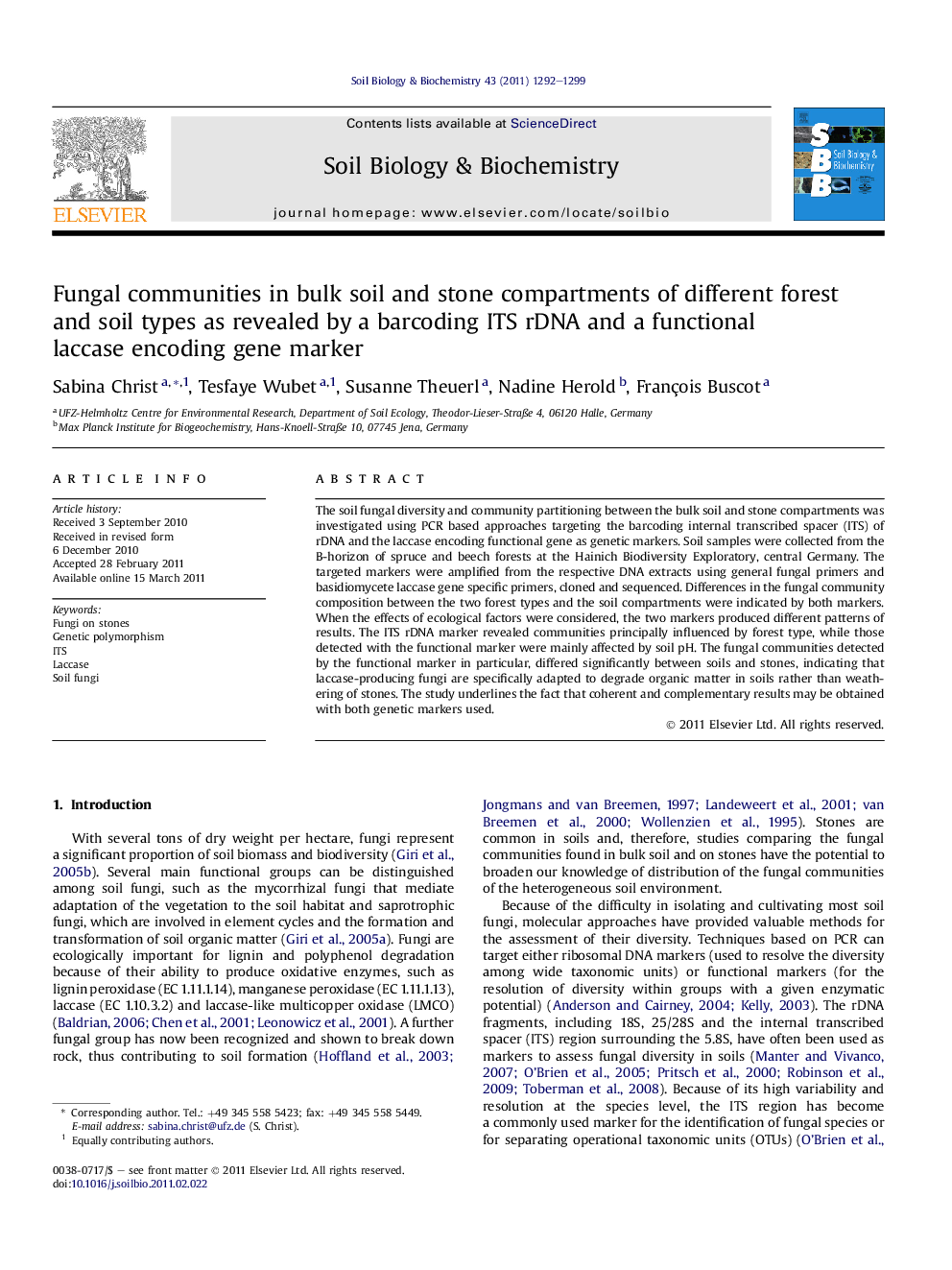| Article ID | Journal | Published Year | Pages | File Type |
|---|---|---|---|---|
| 2025306 | Soil Biology and Biochemistry | 2011 | 8 Pages |
The soil fungal diversity and community partitioning between the bulk soil and stone compartments was investigated using PCR based approaches targeting the barcoding internal transcribed spacer (ITS) of rDNA and the laccase encoding functional gene as genetic markers. Soil samples were collected from the B-horizon of spruce and beech forests at the Hainich Biodiversity Exploratory, central Germany. The targeted markers were amplified from the respective DNA extracts using general fungal primers and basidiomycete laccase gene specific primers, cloned and sequenced. Differences in the fungal community composition between the two forest types and the soil compartments were indicated by both markers. When the effects of ecological factors were considered, the two markers produced different patterns of results. The ITS rDNA marker revealed communities principally influenced by forest type, while those detected with the functional marker were mainly affected by soil pH. The fungal communities detected by the functional marker in particular, differed significantly between soils and stones, indicating that laccase-producing fungi are specifically adapted to degrade organic matter in soils rather than weathering of stones. The study underlines the fact that coherent and complementary results may be obtained with both genetic markers used.
► Use of two genetic markers provides complementary view of fungal diversity in soil. ► Different fungal sub-communities between bulk soil and stones. ► Stones represent distinct islands of biodiversity within soils.
